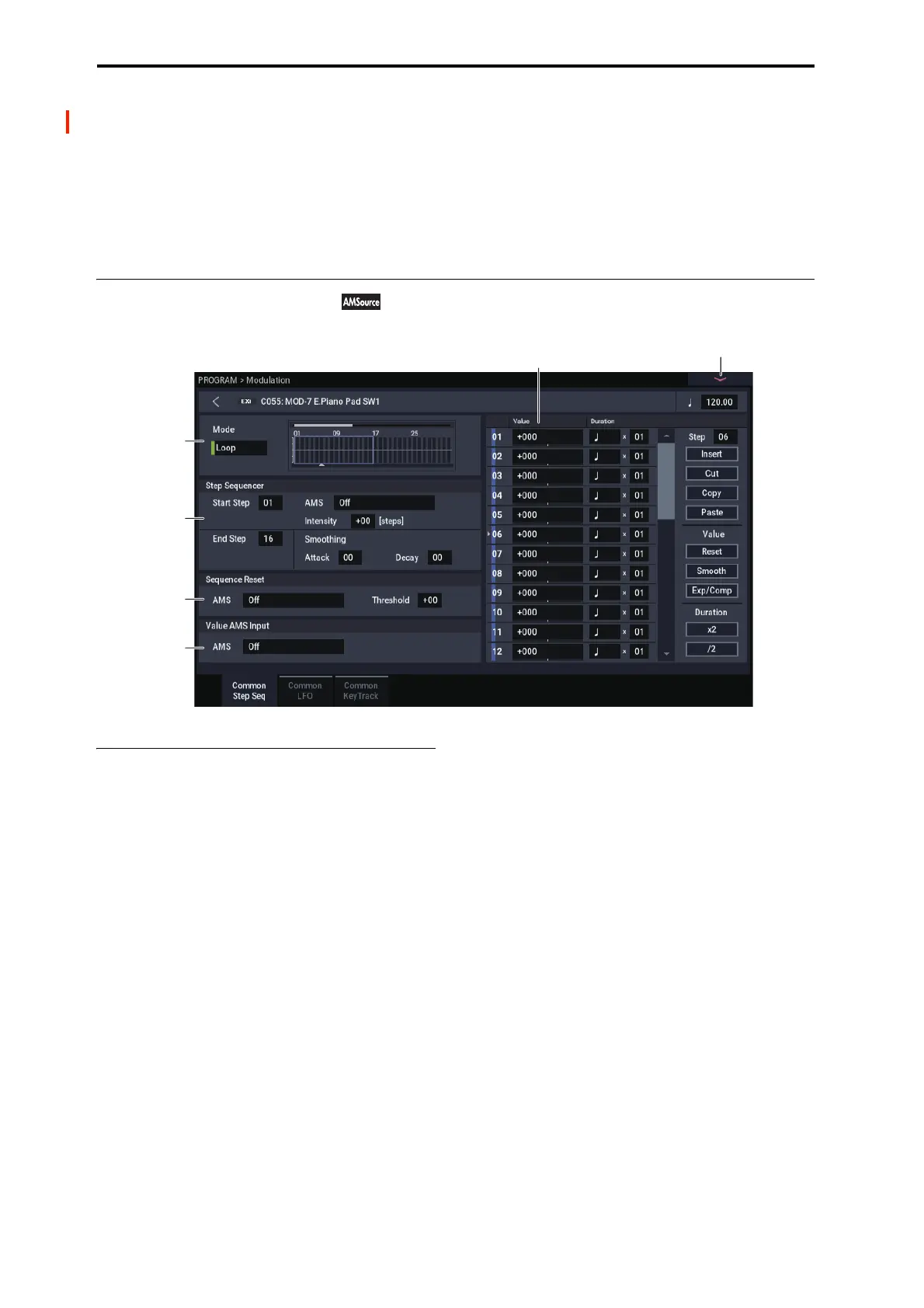PROGRAM mode: EXi
136
EXi PROGRAM > Modulation
The entire Program shares several modulation sources,
including:
• A single Common LFO, shared by all the voices - similar
to the global LFO on some vintage analog synths
• A single Common Step sequencer, shared by all the
voices
• Two Common Key Tracking generators, which are set up
for the entire Program, but then calculated individually
for each voice
These pages let you set up these Program-wide modulation
sources.
5–1: Common Step Seq
Overview
The Common Step Sequencer creates complex, rhythmic
patterns, which can then be used as an AMS source. For
instance, you can modulate a filter to create sample-and-hold
effects, modulate pitch to create melodic patterns, or
modulate amplitude to create pulsing, triggered-gate effects.
The sequence can have up to 32 steps, each with its own
level and duration. It can loop, or play only once. You can
also:
• Re-start the Step Sequencer via AMS
• Modulate the Start Step via AMS
• Use individual steps to either gate or do sample-and-hold
on a continuous AMS source, such as an LFO
• Assign individual steps to create a random level
• Use Smoothing to create gentle, curving shapes
Differences from per-voice Step Sequencers
There is only a single Common Step Sequencer shared by
the entire Program. It starts running as soon as you select the
Program, and only resets when you tell it to do so explicitly
via the Sequencer Reset parameter. This is different from
the per-voice Step Sequencer’s Key Sync Off setting, which
resets whenever all notes are released.
(However, you can create a similar behavior, if you like; see
the Sequencer Reset parameter for more information.)
The Common Step Sequencer’s persistence can be handy if
you want to create a constant rhythm, and then play
“underneath” that rhythm without re-triggering it. For
instance, you can use a MIDI controller in your sequencer to
reset the Common Step Sequencer every few bars, regardless
of what notes are being played.
Creating melodic patterns with the Step
Sequencer
You can use the Step Sequencer to modulate synthesis
parameters, such as filter cutoff– and you can also use it to
create melodic patterns. To do so:
1. Assign the Step Sequencer as an AMS source for
Pitch.
2. Set the AMS intensity to +25.
3. In the Step Sequencer, set the step values as desired.
Each increment of 4 equals a semitone.
For example, to play an ascending chromatic scale, set the
step values to 0, +4, +8, +12, +16, and so on. One octave up
is +48, and two octaves up is +96.
5–1PMC
5–1a
5–1a
5–1b
5–1c
5–1b

